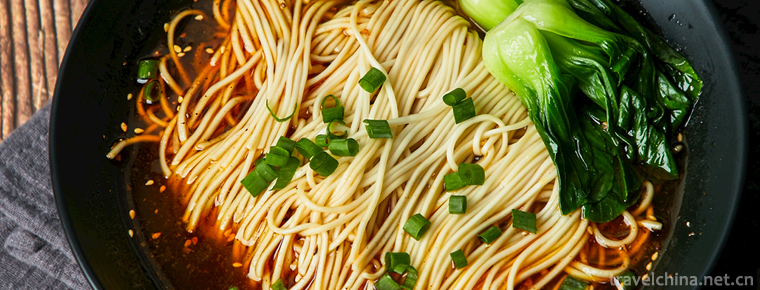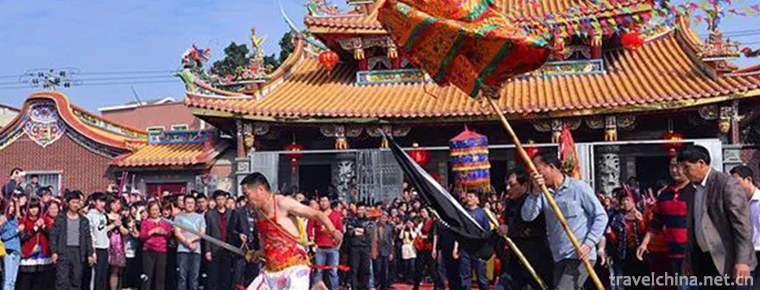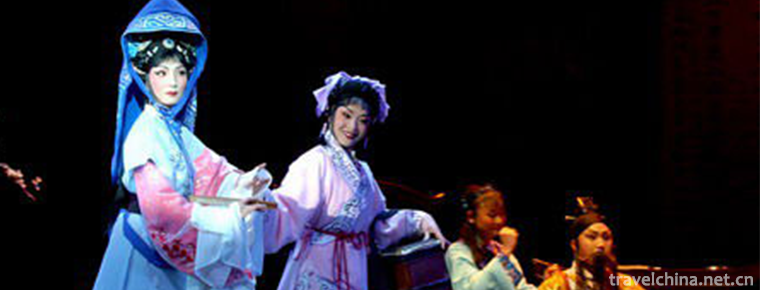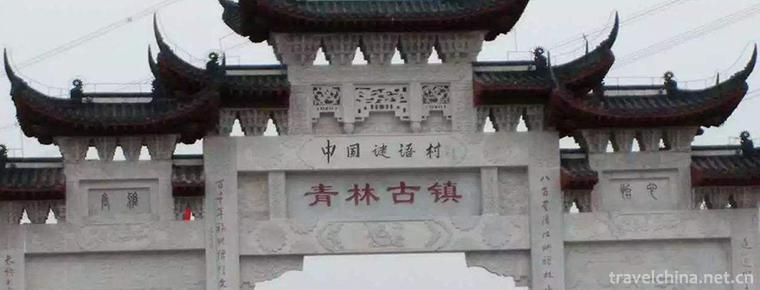Three stick drum
Three stick drum
Three-stick drum is one of the traditional folk songs.
Sanwanggu is a kind of folk singing form widely spread in Youyang of Chongqing, Yongshun County of Longshan County in Western Hunan, Zhangjiajie and Wuyang, Tianmen and Enshi Prefecture in southwestern Hubei.
Sanwang Drum originated from Sanwang Drum in Tang Dynasty. Shen Defu of the Ming Dynasty has recorded the performance of the three stick drums in the Wanli Dynasty in Guqu Zayan. At the end of Qing Dynasty, it merged with Fengyang Huagu and spread widely. In order to make a living, people in the area of Wuyang and Tianmen left their homes and traveled far and wide to Central Europe and Southeast Asia, where they went and where they sang, they were called "Chinese Gypsies". In addition to the Northeast, it can be found all over the country, and with artists spread to dozens of countries such as Britain, France, Italy, Singapore, Malaysia.
The skills of three sticks drum beating include single span flower, cutting four doors, twisting, weaving, single drum flower, double drum flower, sparrow drilling bamboo and wood, White Snake spitting flying sword, Oolong stirring water, money hanging gourd, etc.
On May 23, 2011, Sanwanggu was listed in the third batch of national intangible cultural heritage list with the approval of the State Council.
Introduction to Opera
A Brief Introduction to Varieties of Music
Sanwang Drum, originated from Sanwang Drum in Tang Dynasty, is a kind of folk singing form widely spread in Yongshun County, Longshan County, Western Hunan Province, Zhangjiajie and Enshi Prefecture, Southwest Hubei Province. Its emergence and long-term survival, although there is a folk legend of "Zhou Tianguan blocked nine rivers" actually for the past dynasties of the feudal rulers of the extravagant conquest, not to build dikes, resulting in the local nine floods for ten years, successive disasters. In order to survive, people have begged along the door in the form of playing three drums, playing dishes and singing ditties, running all over the country. After a long period of singing practice, it gradually formed this unique form of walking singing with strong local style.
historical origin
One of the Folk Sports Activities--Three-stick Drum
Three stick drums appeared in Tang Dynasty, which was called three battle drums at that time. It used to be popular. Three-stick drums, named after throwing three sticks and beating gongs and drums, are a kind of literary activity which combines percussion instruments, oral literature and performing skills everywhere in Tujia Mountain Village.
Three stick drums are popular in Tianmen, Wuyang and other places in Hubei Province. They originated from the Tang Dynasty and were once widely popular. It is named for throwing three special drumsticks and beating drums. Shen Defu of Ming Dynasty wrote in Gu Qu Za Yan: "There are always women in Wuxia who play three drums and beg for money, which is the fashion of Yu Ju." It shows that this kind of music existed in the Ming Dynasty and then flowed into Hubei, and it was popular in Jingling (today's gate market). At the end of the Qing Dynasty, Fengyang Huagu merged with Fengyang Huagu and spread widely to Wuyang, Tianmen, Honghu, Qianjiang, Jingshan, Macheng, Shashi, Yichang, Enshi, Hunan, Anhui, Jiangsu, Zhejiang, Fujian, Guangdong, Jiangxi, Henan, Hebei, Shandong, Shaanxi, Sichuan, Yunnan, Guizhou, Tibet and other provinces. Three-stick drums also spread to Britain, France, Italy, Malaysia, Singapore, India, Indonesia, Vietnam, Brunei, Cambodia, Laos, Myanmar, Bangladesh, Pakistan and other countries along with artists.
Three-stick drum stick method comes from life, "making spring ploughing", "harvesting and playing field", "celebrating harvest" and "New Year's Day" four sets of stick method have a strong flavor of life. Three-stick drums are highly skilled. They require a high degree of concentration, proper exertion, consistency and tacit cooperation with the singer.
Every Spring Festival, artists go to villages to celebrate the New Year, whether rich or poor, households will come. When meeting a very poor fisherman, the performer will also send gifts from other families in the hope that everyone will enjoy the festival. In the area of Honghu Lake in Wuyang, Sanwanggu has a good market, so there are many artists. Around 1818, the three daughters of a household in Honghu Lake, Wuyang, were excellent three-stick drum artists. They formed a theater troupe. Wherever they went, the crowd gathered to watch often "looked up and stretched their necks around the wall".
However, the continuous water shortage along the Honghu Lake has led to people's lack of livelihood. In order to survive, people carry three drums and wave around. Three stick drums have become a way of expressing ideas for the people of Honghu Lake and a weapon in the hands of the people of Honghu Lake.
Since 1949, in addition to water disasters, water conservancy, the Honghu people's desert and vagrancy has become an eternal past. Three-stick drums strike out the "Three-stick drums new song" of the people of Honghu Lake. Listening to a new song of "fish and crab fat, lotus green and lotus root white", we can understand the confidence and determination of the people of Honghu Lake to go to a well-off society.
How to Use the Three-stick Drum
Three stick drums, known as three battle drums in the Tang Dynasty, were introduced into the territory in the Ming Dynasty and gradually became popular folk art. Every Spring Festival, artists go to villages and villages together to celebrate the New Year. The performers are rich and poor, and the households are bound to come. In the case of a poor family, performers present gifts from other families in order to celebrate the holidays for everyone. It fully embodies the warm and hospitable national character of the unearthed family. It plays a certain role in strengthening inter-ethnic unity .
Three drums usually consist of three to five people, one playing drums and lyrics, one playing gongs and drums and one playing tricks. The flower sticks are three, one foot long. The dancer holds one stick on the left and the other stick in the air. He throws the other stick in the air, arches the left and the right, and hits the flower stick in the air to keep it from falling to the ground. There are also skills of substituting knives for sticks and five for three. Steel knives jump in the air, silver shines, shuttle left and right. The highly skilled person suddenly throws the knife high, takes off with flying feet, turns around and throws the knife upward, which makes people dazzled and amazing. There are four sets of drums, namely, spring ploughing, harvesting, harvesting, harvest celebration and New Year's Day. They are divided into four items: carp jumping on the Dragon gate, jade shuttle and slate drifting beach. Three-stick drums are highly skilled, and they need to be highly concentrated, properly exerted, consistent and cooperate with the singer tacitly.
Manifestation
The props of the three-bar drum include drums and bars, as well as knives and forks. The form of performance is similar to acrobatics. Usually, artists are mostly women. Generally, 3 - 5 women form an art group. One person plays drums and lyrics, one plays gongs and drums, and one plays tricks. The stick player holds one stick in his left and right hands, opens his bow and hits another stick thrown in the air to keep it from falling, but his rhythm must be consistent with the drum. There are also five steel knives instead of sticks, steel knives shuttle around in the air, silver glittering, dazzling.
Three-stick drum is a unique form of walking singing. There are two kinds of performances: singles and doubles. Single performers play three drumsticks embedded with copper coins to accompany the singing, and tap the gongs hanging on the side of the drum. In the double performance, one man threw a stick and beat a drum, the other played a gong, and the two sang in pairs. The drum face of three drums is seven inches and five minutes in diameter and four inches in height. Three drum sticks, each seven inches long, chisel three small square holes on different sides of the stick, embedded in copper eye money. The three drumsticks are nine eyes and eighteen coins. The three drums were thrown and beaten, the money in their eyes hit each other, the drums flipped up and down, and the drums fell in harmony. There are about twenty or thirty kinds of skills for throwing three drums, such as "golden thread hoist", "girl spinning cotton yarn", "white snake flying arrow", "sparrow drilling bamboo forest", "oolong stirring water", "lame dustpan", "cutting four doors", "single cross flower", "double cross flower", "single back flower", "double back flower", "weaving cloth", "twisted flower" and so on. Three sticks drum lyrics are popular, words and sentences are short, each rhyme. The structure of the lyrics varies from place to place. The common sentence patterns are "five, five, seven, five" sentences and four sentences in a group. There are also "five, five, seven" sentences, three sentences in a group. The voice style of Sanwanggu is simple and euphemistic. Because of the strict rules of throwing sticks and drums, the rhythm of singing is stable and has little change.
Playing three-stick drums usually consists of three to five people. The master plays drums and sings lyrics, one plays gongs, one plays tricks and knives. The drum rack is put on the front drum rack by one person, the Gong is hung under the drum rack, and the Gong bar is tied with a string on the footboard. During the performance, the oral lyrics, hand drums and foot steps on the gong, and the rhythm of the gong and drum depends on the speed of throwing flower sticks and flower knives. The lyrics of Sanwanggu are composed of five words, four sentences and half sentences. That is, five words and one sentence, four sentences as a section. Repeat half of the fourth sentence in each section. The gongs and drums are beaten four times in each section. The first three sentences are struck three times after each song, and the last one is struck ten times at the end of each stanza. For example, singing: "learn to play three drums" and "clang clang"; singing "learn hard" and "clang clang clang"; singing "learn from three to fifteen years old" and "clang clang clang clang clang"; singing "learn to walk along rivers and lakes" and "clang clang clang clang clang clang, clang and clang-clang". In this section, each word is a beat, gongs and drums are the same sound, each sound takes up a beat, punctuation marks also take up a beat. The speed of each beat depends on the speed at which the flower stick falls. Every flower stick falls once. Therefore, if the stick is thrown low, the falling frequency will be fast, and the time taken for each beat will be short. On the contrary, if the stick is thrown high, the time taken for each beat will be long. The second and fourth sentences of Sanwangu require rhyme. One and three sentences can be pressed but not pressed.
The gongs and drums playing the three-stick drums remain unchanged, but the lyrics are varied, except for the fixed "December Flower" and other lyrics, all of them are improvised lyrics, singing the three-stick drums, are all intelligent and eloquent.
The skill of playing three-stick drum is very strong, the thought should be highly concentrated, the throwing force should be moderate, the action should be agile and accurate, and slightly negligent. Not only the performance fails, but also the hand and foot will be cut by the knife or other people will be injured by mistake. Therefore, anyone who learns to play three-stick drums should often practice flying throwing and catching technology, so that they can throw the catching stick when they close their eyes. Therefore, teenagers often use three pebbles to practice throwing technique. Over time, practice makes perfect. They not only throw sticks, but also throw knives.
Main Forms
Three stick drums, also known as flower drums, are very popular in Laifeng, Hunan Longshan and Youyang, Chongqing. Especially in Jiushi and Dahe area of Laifeng County, three-year-old dolls will improvise at any time and anywhere. I still remember clearly the two songs I used to sing when I was a child. When I talked about playing flower drums, I had to study hard. When I was three years old, I would play flower drums until I was 15 years old.
Knife and knife three pieces of iron, dare to throw, dare not connect, fall on the foot to bleed, find medicine to take a rest.
According to investigation, Sanwang Drum was called Sanwang Drum in Tang Dynasty. Shen Xingfu of Ming Dynasty said in Guqu Zayan: "Where did Wuxia come to play Sanwang Drum and beg for money? When I was a child, I saw Sanwang Drum, which started in Xiantong of Tang Dynasty (865 AD)." It was introduced into this area in Ming Dynasty and gradually became a popular folk art form. Every Spring Festival, artists go to villages and villages to celebrate the New Year. The performers come to every household, rich or poor. In the case of poor families, performers will give gifts from other homes to celebrate the holidays for everyone.
Three drums are generally composed of three to five people, one playing drums and singing lyrics, one playing gongs and cymbals, and one playing tricks. There are three flower sticks, about 33 centimeters long. People take one in each hand, throw the other one into the air, open the bow left and right, and hit the flower stick in the air to keep it from falling to the ground.
In Tianmen and Wuyang area, people suffered a lot from floods in the past because of the low and flat terrain and the abundance of water. In order to survive, they left their homeland and carried the "three drums" wherever they went and where they sang. Many people go from Hubei to southwestern China, India, Iran, Central and Western Europe. Others traveled through Guangdong to the Philippines and other Southeast Asian countries, and they were called "Chinese Gypsies".
Representational repertoire
The traditional repertoire of Sanwanggu mostly reflects the pain of the people in the old society and their dissatisfaction with the rulers, such as "Runaway Water", "Emperor Xuantong Sitting in Jinluan", "Opening Door" and "Ten Hates". There are also songs that describe the ancients and the four seasons, such as Ten Embroideries and Eight Singing Sceneries. Another part of the repertoire is from folk folk songs, such as "Moon Watcher Lang", "Meng Jiangnu", "Sigh Five Gentlemen" and so on. Nowadays, all of them praise people's new life and new features, such as "More New Things in Our Huxiang Township", "Drums and gongs on Beijing" and so on.
artistic value
The legend of "three stick drums" has existed in Tang Dynasty. At that time, it was called "three stick drums". One person hung a flat drum by his neck and three small wooden battles by his handwheel.
Three sticks beat drums in turn and throw them in the air in turn with one stick. Singing while dancing. After the Song Dynasty, from singing songs to long stories, and transplanting accidents from scripts and drums, such as "Three Kingdoms", "Water Margin", "Fengshen Bang", "Journey to the West", "Xue Jiajiang" and so on. The vocal cavity developed later, in addition to , , , [miscellaneous flower cavity], , there are also , . Most of the lyrics are 3517 sentences, that is, the number of words in each sentence is five, five, seven and five.
Survival status quo
On the basis of sorting out and digging traditional passages and cooperating with local economic development, the Huagu Performance Team in Yanchaomen Village, Jiusixiang, Laifeng County, compiled more than 400 passages of Huagu Ci and performed more than 100 performances in urban and rural areas every year. They have participated in performances, competitions and propaganda activities organized by Laifeng County of Hubei Province, Longshan County of Hunan Province and Youyang County of Chongqing for many times. They are loved by people from all walks of life for their loud voice, excellent dancing skills and excellent lyrics. For example, the passages they sang were very authentic.
Laifeng Sanwan Drum has a long history. It has been handed down from generation to generation among the people, and its stunt predecessors have stayed.
Hand throwing knives and sticks, playing new tricks, while throwing and singing, the export can be a chapter.
Passengers came and went to Fengfu and entered Huaguwo. The troop was huge and there were many people performing all over Sichuan, Hunan and Hubei provinces.
Collect and process the traditional cross talk repertoire. Counterpart. Short paragraph. The original name is Xuejuan Opera. The content of learning and singing often varies from person to person. In 1956, Hou Baolin processed and performed it and renamed it "Three Drums".
The repertoire begins with a brief account of the development of opera critics. It also imitates the singing characteristics of "Dakou Laozi" by learning the selected passages of "Liu Gong Case" by Hualian Fang, a famous opera critic in the early 1930s and "Yutang Chun" by Lao Bai Yushuang. Then I recalled and imitated the sad scene when the opera was just rising, when I was singing "Mama's voice" in a cloth circle at the temple fair: because the class owners were only interested in making money, regardless of actors and audiences, they often stopped beating drums to give the audience pocket money in the middle of the performance. As a result, it was more expensive than buying tickets to listen to the opera and hurt the audience. Hou Baolin's performance simulated not only the profitable master of the theatre troupe, but also two old ladies who went to the theatre. Through two different voices and smiles, he satirized the deformity of the old society.
In the second half of 1956, Hou Baolin and Guo Qiru, the Central Radio Rap Troupe, premiered and recorded the radio. In order to retain the program, the script was included in "Hou Baolin Crosstalk Selection" published by People's Literature Publishing House in 1980.
In March 2017, a creative song "Rock and Roll+Three-stick Drum" was widely disseminated on the Internet. For the first time, this work was integrated into the rhythm of rock and roll, accompanied by Chinese drums and Suona. The creative team boldly innovated the word structure, sentence structure, rhythm and rhythm of the three-stick drums. The lyricist Huang Moya once again brought modern times to life. The writing of poetry melts into the expression of vulgarity and humor. The lead singer Luo Qing, led by Xiao Zegui, Yang Miaoqin, Yuan Mingcan, Yang Zhiyi, Xiaochang Yonglao, middle-aged and young three generations of three-stick drum artists, singing passionately, expressing the complex feelings of strangers struggling and wandering in Beijing, triggering heated discussions among people from all walks of life.

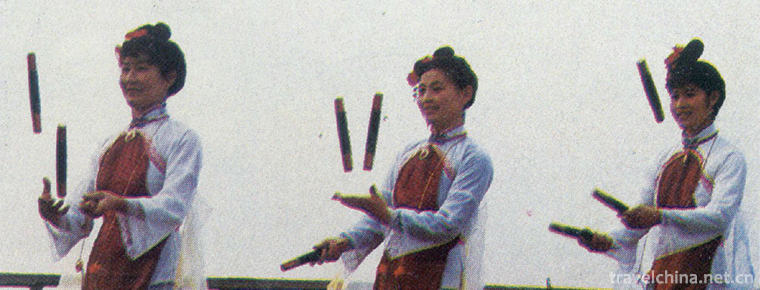
-
Chongqing small noodles
Chongqing small noodles is one of the four characteristics of Chongqing.
Views: 281 Time 2018-10-12 -
Ruoergai CountyZoige County
Zoige County is located in the northeastern edge of the Qinghai-Tibet Plateau.
Views: 161 Time 2018-10-12 -
Yesanpo Scenic Area Laishui County Baoding
The Yesanpo Scenic Area of Laishui County, Baoding City, Hebei Province, is located in Laishui County, Baoding City. The Taihang Mountains and Yanshan Mountains.
Views: 189 Time 2018-11-24 -
Shangganling Xishui National Forest Park
Shangganling Xishui National Forest Park combines the strong local flavor and exotic style with the elegance of "paradise". It has both unique natural landscape and distinctive humanistic la.
Views: 383 Time 2018-12-19 -
Baling Opera
Baling Opera, a local traditional drama in Yueyang City, Hunan Province, is one of the national intangible cultural heritage..
Views: 162 Time 2019-04-02 -
The Religion and Customs of Baosheng Emperor
Baosheng Emperor, also known as Wu Zhenren, was born on March 15, 1979, in Baijiao Village, Tong'an County. Since his childhood father died of illness.
Views: 200 Time 2019-04-04 -
Dian Opera
Yunnan Opera is one of the local operas in Yunnan Province. Silk string (originated from the earlier Qin Opera), Xiangyang (originated from the Xianghe School of Han Diao) and Huqin (originated from H.
Views: 137 Time 2019-04-26 -
The riddle of Qinglin Temple
The number of riddles in Qinglin Temple is abundant, there are about 5000. There are many kinds of riddles, such as object riddles, event riddles and crossword riddles. Many of the riddles have high c.
Views: 115 Time 2019-06-11 -
Legend of the Three Kingdoms
The legend of the Three Kingdoms is a kind of folk literature which was approved by the State Council and listed in the fourth batch of national intangible cultural heritage list in 2014..
Views: 213 Time 2019-06-12 -
Wawushan National Forest Park
Wawushan National Forest Park is located in Hongya County, Meishan City, west of Sichuan Basin. It is 180 kilometers away from Chengdu and 100 kilometers away from Leshan. As of 1993, the park covers an area of 65869.80 hectares, rich in vegetation resources.
Views: 86 Time 2020-10-15 -
Science and technology of Panzhihua
In 2018, there were 2865 patent applications in Panzhihua. The output value of high-tech industry reached 53.1 billion yuan, and 2015 science and technology projects were arranged, including 780 high-tech projects, 320 new high-tech projects in that year, and 16 science and technology.
Views: 342 Time 2020-12-14 -
Neijiang in the new China period
From December 5 to 15, 1949, the people of Neijiang and other eight counties declared liberation one after another. In 1950, the office of Zizhong Commissioner moved to Neijiang and was renamed Neijiang special area. It has jurisdiction over Neijiang.
Views: 237 Time 2020-12-16
